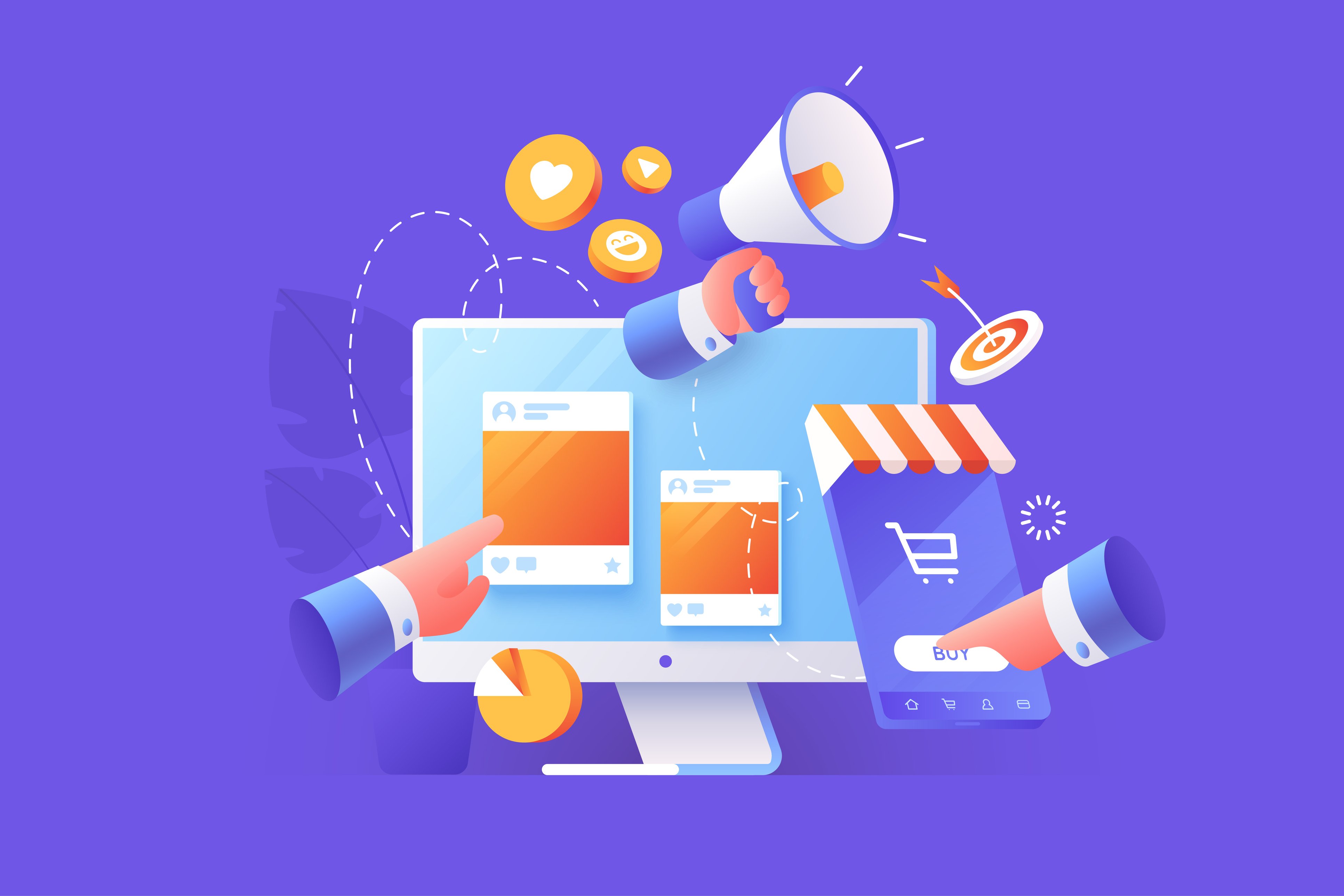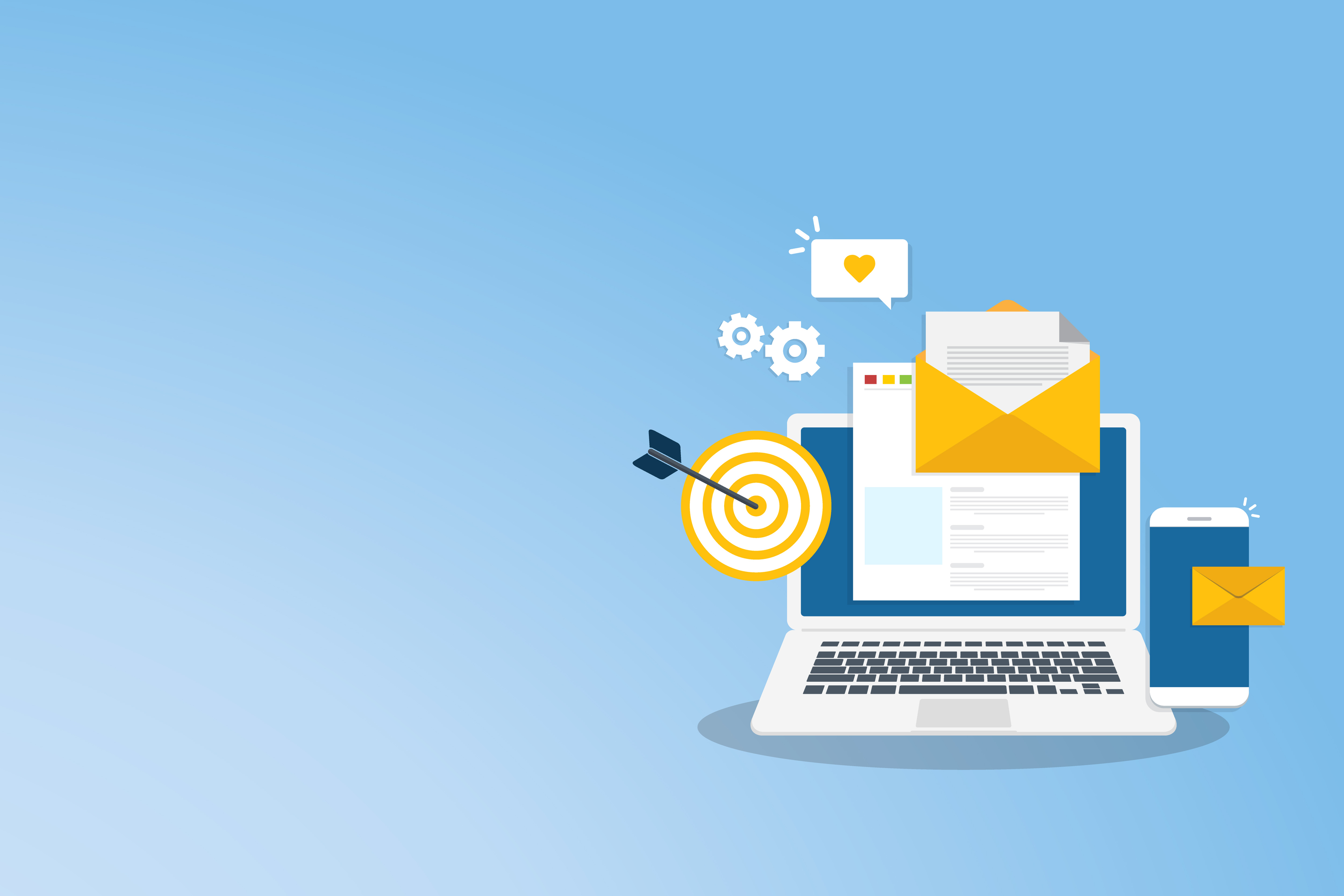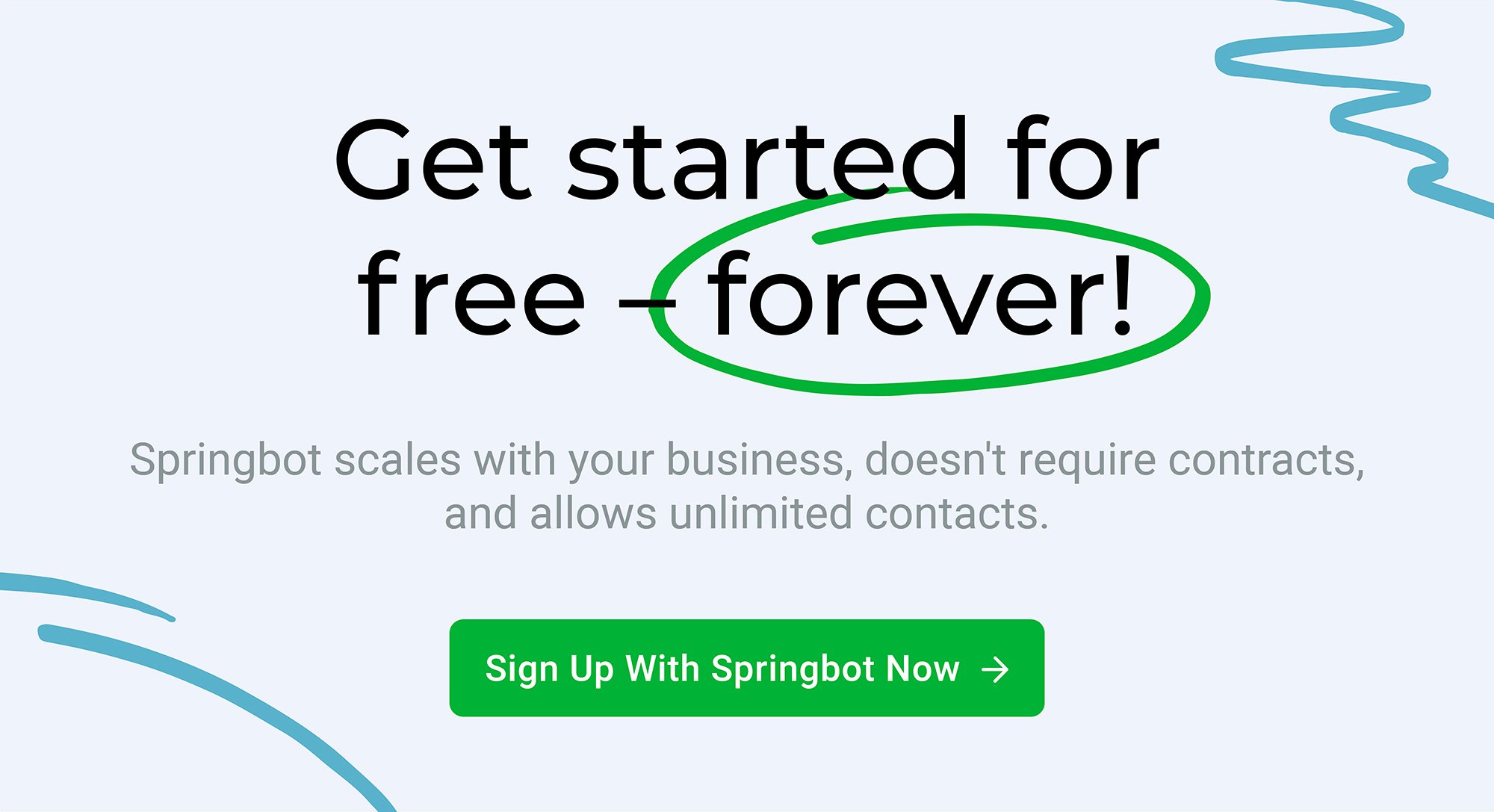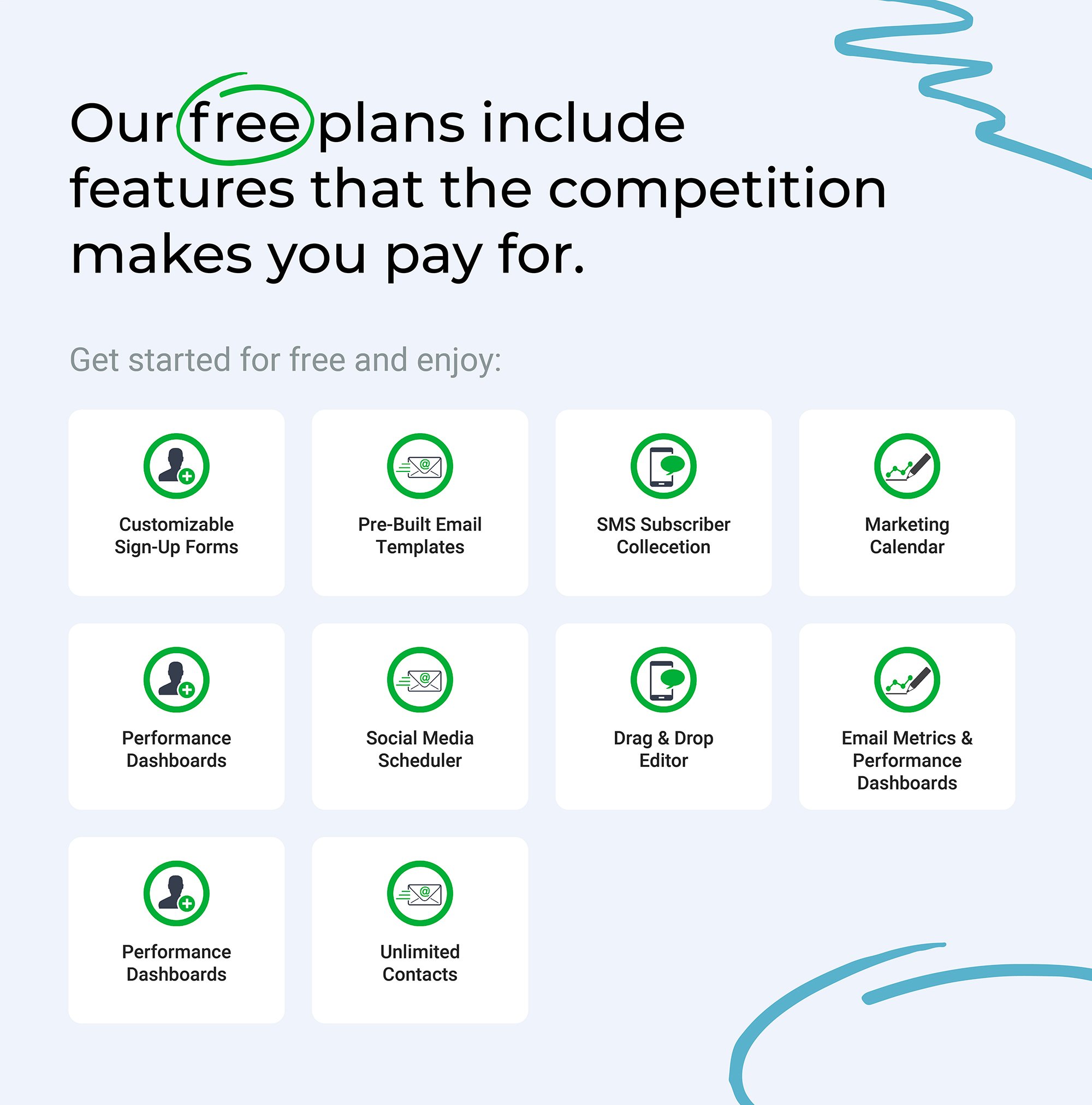Table Of Contents
- The Importance of Email Marketing for Small Businesses
- Popular Email Marketing Campaigns for SMBs
- How to Build an Email List
- Tips for Crafting Effective Email Campaigns
- Marketing Automation and Drip Campaigns
- Best Practices for Compliance
- Building Relationships Through Email Marketing
- Why Springbot - Get Started For Free
Email marketing software has become an indispensable tool for small businesses to connect with their audience, build relationships, and drive sales. This comprehensive guide will walk you through the essential steps of email marketing for small businesses.
Whether you're just starting or looking to optimize your existing email campaigns, this guide will provide valuable insights and actionable tips.
The Importance of Email Marketing for Small Business Owners
Email marketing is a powerful strategy that sends targeted messages to subscribers who have willingly provided their email addresses.
It lets you reach your audience directly in their inbox, offering a personalized and engaging experience. Email marketing offers numerous benefits for small businesses, such as increased brand awareness, customer retention, and higher conversion rates.
10 Reasons Why Small Businesses Should Invest in Email Marketing

Small businesses should invest in an email marketing platform for several compelling reasons:
1.) Cost-effectiveness: Email marketing is one of the most cost-effective marketing channels available. Unlike traditional advertising methods like print or television, email marketing allows small businesses to reach a large audience at a fraction of the cost.
2.) Direct and personalized communication: Email enables businesses to communicate directly with their audience in their personal inboxes. It provides a personalized touch, enabling you to address subscribers by name and tailor the content based on their interests or past interactions. This direct communication fosters a sense of connection and builds stronger customer relationships.
3.) Increased brand awareness and engagement: Regularly appearing in your subscribers' inboxes keeps your brand top of mind. By consistently delivering valuable content, promotions, and updates, you reinforce your brand's visibility and increase customer engagement.
4.) Customer retention and repeat business: Email marketing is an effective tool for nurturing existing customer relationships. By staying in touch with your customers and providing them with relevant content and offers, you can encourage repeat purchases, increase customer loyalty, and foster long-term relationships.
5.) Targeted and segmented campaigns: Segment your audience based on demographics, preferences, or behaviors. This segmentation enables you to send highly targeted campaigns tailored to specific customer segments, ensuring your messages are more relevant and effective.
6.) High conversion rates: Email consistently delivers one of the highest conversion rates among digital marketing channels. When you communicate with subscribers who have already expressed interest in your business, you have a higher chance of driving them to take desired actions, such as purchasing, signing up for a service, or downloading a resource.
7.) Measurable results and analytics: Email marketing platforms provide robust analytics and tracking tools that allow you to measure the success of your campaigns. You can monitor open rates, click-through rates, conversions, and other key metrics, gaining valuable insights into your audience's preferences and behaviors. This data-driven approach helps you optimize your campaigns and achieve better results over time.
8.) Automation and scalability: Email marketing platforms offer automation features that save time and streamline your campaigns. You can set up automated welcome emails, drip campaigns, and triggered emails based on specific actions. This automation allows you to scale your email marketing efforts without significant manual effort.
9.) Integration with other marketing channels: Email marketing can seamlessly integrate with other marketing channels, such as social media, content marketing, and website promotions. By leveraging multiple channels together, you create a cohesive and powerful marketing strategy that amplifies your reach and impact.
10.) Higher return on investment (ROI): Due to its low cost and high conversion rates, email marketing consistently delivers a significant return on investment. Small businesses with limited marketing budgets can benefit from the high ROI that email marketing offers.
The 8 Most Popular Email Marketing Campaigns for Small Businesses

1.) Welcome Series
- A welcome series is an automated campaign that is triggered when a new subscriber joins your email list.
- It introduces your brand, provides valuable information about your products or services, and sets expectations for future communications.
- The series typically consists of multiple emails sent over a few days or weeks to onboard and nurture new subscribers.
2.) Promotional Campaigns
- Promotional campaigns are designed to highlight specific products, services, or offers.
- These campaigns can include limited-time discounts, sales announcements, new product launches, or holiday promotions.
- The goal is to create a sense of urgency and encourage recipients to take advantage of the offer.
3.) Abandoned Cart Recovery
- Abandoned cart emails are triggered when a customer adds items to their cart but leaves without completing the purchase.
- These emails aim to remind and incentivize customers to return and complete their purchase.
- They often include a list of abandoned items, a call-to-action to complete the purchase, and sometimes even offer a discount or free shipping.
4.) Customer Surveys & Feedback
- Email surveys and feedback campaigns help small businesses gather valuable customer insights.
- These campaigns can include satisfaction surveys, product or service feedback forms, or customer experience questionnaires.
- The feedback received can inform product improvements, customer service enhancements, and overall business decision-making.
5.) Event Invitations & Reminders
- Small businesses can use email marketing to invite subscribers to attend webinars, workshops, conferences, or other events.
- These campaigns provide event details, agenda, and registration links and may include reminder emails as the event approaches.
- Event campaigns help generate interest, drive attendance, and engage with the target audience more interactively.
6.) Cross-selling and Upselling
- Cross-selling and upselling campaigns aim to encourage customers to purchase additional or higher-value products or services.
- These campaigns are based on customer purchase history and can suggest complementary products, accessories, or upgrades.
- Businesses can increase average order value and customer lifetime value by showcasing relevant offerings.
7.) Seasonal & Holiday Campaigns
- Seasonal and holiday campaigns leverage special occasions and events throughout the year to engage subscribers.
- They can include themed promotions, holiday greetings, gift guides, or exclusive offers tied to specific holidays or seasons.
- These campaigns help create a sense of excitement and encourage recipients to connect with your brand during festive periods.
8.) Educational Content, Thought Leadership, & Newsletters
- Educational content and newsletters provide valuable information, tips, industry insights, or expert advice to subscribers.
- These campaigns aim to build authority, trust, and credibility while nurturing customer relationships.
- Newsletters can be sent regularly (weekly, monthly) to keep subscribers informed and engaged.
8 Methods For Building an Email List

The foundation of a successful email marketing campaign is a high-quality and engaged email list.
Here are the steps small businesses should take to build them:
1.) Create an Opt-In Form on Your Website
- Place an opt-in form prominently on your website, such as on the homepage, sidebar, or footer.
- Keep the form simple and easy to fill out, requesting only essential information like name and email address.
- Clearly communicate the value subscribers will receive by signing up, such as exclusive content, discounts, or updates.
2.) Offer Lead Magnets to Incentivize Sign-Ups
- Create valuable lead magnets, such as e-books, guides, templates, or exclusive content, that align with your target audience's interests.
- Promote these lead magnets on your website, blog posts, social media, or through targeted ads.
- Require visitors to provide their email address to access the lead magnet, thereby growing your email list.
3.) Leverage Social Media
- Promote your email newsletter or lead magnets on your social media platforms, such as Facebook, Instagram, Twitter, or LinkedIn.
- Create compelling social media posts with clear calls-to-action directing users to sign up for your email list.
- Run contests, giveaways, or sweepstakes that require participants to provide their email address to enter.
4.) Use Offline Strategies
- Collect email addresses at in-person events, conferences, trade shows, or networking events by having a sign-up form or offering business cards for individuals to provide their information.
- Train your staff to ask customers or clients for their email addresses during in-store interactions or during the checkout process.
- Consider implementing a customer loyalty program where customers can provide their email addresses to receive exclusive benefits.
5.) Collaborate with Partners or Influencers
- Collaborate with complementary businesses or influencers in your industry to cross-promote each other's email newsletters or lead magnets.
- Feature guest content or interviews from industry experts in your email newsletters, attracting their audience to subscribe to your list.
- Ensure that any partnerships align with your target audience's interests and provide mutual value.
6.) Optimize Landing Pages and Calls-to-Action (CTAs)
- Create dedicated landing pages focusing on the benefits of subscribing to your email list.
- Make the sign-up process straightforward with a clear and compelling CTA button.
- A/B test different variations of landing pages and CTAs to optimize conversion rates and maximize sign-ups.
7.) Implement Pop-Up Forms and Exit Intent Pop-Ups
- Utilize pop-up forms or exit intent pop-ups on your website to capture visitors' attention before they leave.
- Offer a valuable incentive, such as a discount or exclusive content, to encourage sign-ups.
- Set display rules to ensure the pop-ups are not overly intrusive and provide a positive user experience.
8.) Regularly Promote Your Email List
- Continuously promote your email list through various marketing channels, such as social media, blog posts, website banners, or email signatures.
- Remind your audience of the benefits they'll receive by joining your email list, reinforcing the value proposition.
12 Tips for Crafting Effective Email Campaigns

Effective email campaigns are essential for small businesses to engage their audience, drive conversions, and achieve their marketing goals.
Here are some tips to help you create compelling and impactful email campaigns.
1.) Define Clear Goals & Objectives
- Determine the specific goals you want to achieve with each email campaign, such as increasing sales, driving website traffic, promoting a new product, or nurturing customer relationships.
- Align your email content, design, and call-to-action with your objectives to ensure consistency and effectiveness.
2.) Segment Your Email Lists
- Divide your email list into smaller segments based on demographics, interests, purchase history, or engagement level.
- Send targeted campaigns to each segment, delivering more relevant content that resonates with their specific needs and preferences.
3.) Personalize Your Emails
- Address your subscribers by their names in the email greeting to create a sense of personal connection.
- Leverage subscriber data to personalize email content, such as recommending products based on past purchases or tailoring content based on their preferences.
4.) Write Compelling Subject Lines
- Craft subject lines that are concise, intriguing, and relevant to the content of the email.
- Use personalization, urgency, or curiosity to grab the recipient's attention and entice them to open the email.
5.) Design Engaging & Mobile Friendly Emails
- Use a responsive email template that adapts to different devices, ensuring a seamless experience for mobile users.
- Incorporate visually appealing elements, such as images, videos, or infographics, to enhance the email's visual appeal and engagement.
6.) Focus on Clear CTAs
- Use prominent and visually appealing CTAs that clearly communicate the desired action you want subscribers to take.
- Make sure the CTA stands out and is easy to click, leading subscribers to the relevant landing page or action.
7.) Keep Email Content Concise & Scannable
- Keep your email content concise and to the point, using short paragraphs, bullet points, and subheadings to make it easily scannable.
- Highlight the most important information and key takeaways to capture readers' attention.
8.) A/B Test & Optimize
- A/B test different elements of your emails, such as subject lines, CTAs, email designs, or content variations, to identify what resonates best with your audience.
- Analyze the performance metrics, including open rates, click-through rates, and conversions, to make data-driven decisions and optimize your campaigns over time.
9.) Conduct Email Deliverability Testing:
- Preview and test your emails across different devices (desktop, mobile, tablet) and email clients (Gmail, Outlook, Apple Mail) to ensure optimal rendering and consistent experience for all recipients.
10.) Maintain Consistent Branding:
- Use your brand's visual elements, such as colors, fonts, and logo, to maintain a consistent and recognizable brand identity throughout your emails.
- Incorporate your brand's voice and tone in the email content to create a cohesive brand experience.
11.) Pay Attention to Timing & Frequency:
- Test different send times and days of the week to determine when your audience is most likely to engage with your emails.
- Avoid overwhelming your subscribers with too many emails, as it may lead to unsubscribes or disengagement. Find the right balance for your audience and adjust the frequency accordingly.
12.) Monitor & Analyze Results:
- Track the performance of your email campaigns using analytics tools provided by your email marketing platform.
- Monitor key metrics, such as open rates, click-through rates, conversions, and unsubscribe rates, to evaluate the effectiveness of your campaigns.
- Use these insights to make data-driven optimizations and improvements
How to Use Marketing Automation & Drip Campaigns

Automation and drip campaigns are powerful tools within email marketing that allow small businesses to deliver timely and personalized messages to their subscribers.
By setting up automated workflows, you can nurture leads, onboard new customers, and engage with your audience in a more efficient and targeted manner.
Here's how you can make the most of automation and drip campaigns.
Welcome & Onboarding Series
- Create a series of automated emails that are triggered when someone subscribes to your list or becomes a new customer.
- Use these emails to welcome new subscribers or customers, provide valuable information about your business, products, or services, and guide them through the onboarding process.
- Customize the content based on their specific interests or actions they took to sign up or make a purchase.
Abandoned Cart Recovery
- Set up automated emails to target customers who have added items to their cart but haven't completed the purchase.
- Send a series of reminder emails to encourage them to return to your website and complete the checkout process.
- Offer incentives, such as discounts or free shipping, to entice them to complete their purchase.
Lead Nurturing
- Develop a drip campaign that nurtures leads over time by delivering relevant and valuable content.
- Segment your leads based on their interests, preferences, or where they are in the sales funnel.
- Send a series of targeted emails that educate, inform, and build trust, gradually guiding them towards making a purchase decision.
Customer Retention and Upselling
- Use automation to engage with existing customers and encourage repeat purchases or upselling.
- Set up triggers based on past purchases or specific customer actions, such as cross-selling related products or sending replenishment reminders for consumable goods.
- Send personalized emails with exclusive discounts, loyalty rewards, or special offers to show appreciation and encourage ongoing engagement.
Re-engagement Campaigns
- Reach out to inactive subscribers with re-engagement campaigns to win them back.
- Send a series of emails with compelling content, incentives, or surveys to rekindle their interest and encourage them to re-engage with your brand.
- Consider offering exclusive promotions or updates to entice them to stay subscribed and active.
Personalization and Dynamic Content
- Leverage automation platforms that allow for dynamic content insertion based on subscriber data.
- Customize emails with personalized product recommendations, tailored offers, or dynamic sections that update based on the subscriber's preferences or behavior.
- Use merge tags to insert subscriber names or other relevant details to create a more personalized experience.
Test, Measure, and Optimize
- Continuously monitor the performance of your automated campaigns.
- Track metrics such as open rates, click-through rates, conversions, and engagement levels.
- A/B test different elements, such as subject lines, email content, or send times, to optimize your automation workflows and improve results over time.
Automation and drip campaigns not only save time and effort but allow you to deliver targeted and timely messages to your subscribers.
By implementing these automated workflows, you can nurture leads, retain customers, and provide a personalized experience that drives engagement and boosts conversions for your small business.
Best Practices for Email Marketing Compliance

It's crucial to comply with email marketing laws and regulations to ensure ethical practices and maintain trust with your subscribers.
Here’s what to consider when it comes to keeping your small business compliant.
Understand email marketing laws and regulations:
- Familiarize yourself with laws such as the CAN-SPAM Act (in the United States) or GDPR (in the European Union).
Obtain explicit permission and ensure opt-outs:
- Only send emails to subscribers who have willingly opted in to receive your emails.
- Provide a clear and easy way for subscribers to unsubscribe from your emails.
Avoid common mistakes and spam filters:
- Use a reputable email service provider (ESP) to maintain high deliverability rates.
- Avoid using spammy language, excessive capitalization, or misleading subject lines.
Implement email marketing best practices:
- Keep your email list clean by regularly removing inactive subscribers.
- Test your emails across different email clients and devices to ensure optimal rendering.
How to Build Relationships Through Email Marketing

Email marketing is not just about selling; it's also about building and nurturing relationships with your subscribers.
Consider the following practices to get the most out of your customer relationships.
Use email to engage and nurture customer relationships:
- Send regular newsletters with valuable content, industry updates, and tips.
- Share success stories, testimonials, or case studies to inspire your subscribers.
Provide value through educational and informative content:
- Offer free resources, guides, or tutorials that address your subscribers' pain points.
- Position yourself as an expert in your industry and a valuable source of information.
Encourage feedback and two-way communication:
- Include surveys, polls, or feedback forms in your emails to gather insights and improve your business.
- Reply promptly to subscriber inquiries or feedback to show you value their input.
Springbot Helps Small Businesses Get The Most Out of Email Marketing For Less
Remember, email marketing is an ongoing process that requires constant testing, optimization, and adaptation to meet the changing needs of your audience. By following the steps outlined in this guide, you can create effective email campaigns that engage your subscribers and deliver tangible results.
The Springbot Email Marketing Platform is a powerful tool that allows small businesses to connect with their audience, nurture relationships, and drive business growth.
Springbot can help you start implementing email marketing strategies for your small business today and unlock the full potential of this valuable marketing channel.






